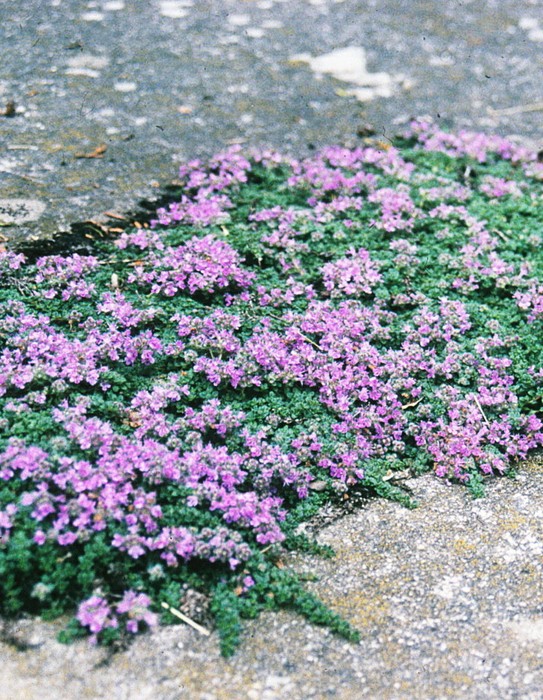

Most varieties of thyme are susceptible to overwatering, and many varieties of thyme tolerate or even thrive amid moderate to severe pruning.Īll varieties of thyme are easy to propagate via cuttings, division, and seed and with their low growing habit–less than 15 inches (38 cm.) tall, this semi-evergreen is appropriate for groundcover or for growing in an herb garden, window box, or pots. Types of thyme plants cultivated for culinary use should be replaced every three years or so to prevent woody stems and promote the desirable tender leaf production. With a little research and even with adverse conditions, however, there are sure to be various types of thyme plants that are suitable for growth in those areas.Īvoid fertilizing thyme varieties as they tend to become leggy and weak.
Elfin thyme succlents full#
Also, most varieties of thyme prefer full sun and well-drained soil. Most thyme varieties are hardy in USDA zones 5 to 9 but tend to dislike hot, humid summers or overly wet conditions. Keep reading about the types of thyme plants you can grow. With this dizzying array of thyme varieties, there is a possible specimen for nearly every climate and landscape. All have been prized for centuries for their fragrance, flavor, and ornamental habit. There are over 300 thyme varieties in the mint family of Lamiaceae, of which thyme is a member. Technology, gaming, politics, food & more.
Elfin thyme succlents how to#
"Creeping thyme lawn: How to replace a lawn with creeping thyme". ^ "Elfin Thyme Care – How Do I Plant Elfin Thyme In The Garden".^ "RHS Plant Selector - Thymus serpyllum 'Pink Chintz' ".^ "What is Xeriscape Nothing More Than Seven Common Gasrdening Principals".^ "Planting and Maintaining a Thyme Lawn".^ Eva Penn-Smith, Caterpillar food plants (PDF).^ a b "Breckland Thyme: Thymus serpyllum".A Field Guide to the Wild Flowers of Britain and Europe, Collins, London, p. ^ "The Plant List: A Working List of All Plant Species".Creeping thyme does best with 6-8 hours of direct or indirect sunlight each day. Make sure the soil stays evenly moist but not soggy - too much moisture can lead to root rot. Ĭaring for creeping thyme is not hard, as long as it gets enough water and enough sun. Several cultivars have been produced, of which 'Pink Chintz' has gained the Royal Horticultural Society's Award of Garden Merit. It may also be used to replace a bluegrass lawn to xeriscape low to moderate foot traffic areas due to its tolerance for low water and poor soils. serpyllum are used as border plants and ground cover around gardens and stone paths. Cultivation Ĭreeping and mounding variants of T. serpyllum contain thymol, carvacrol, limonene, paracymene, gamma-terpinene and beta-caryophyllene.

Wild thyme is one of the plants on which both the common blue butterfly and large blue butterfly larvae feed and it is also attractive to bees. It is a plant of thin soils and can be found growing on sandy-soiled heaths, rocky outcrops, hills, banks, roadsides and riverside sand banks.

Wild thyme is native to the Palearctic realm of Europe and Asia. The fruit is a dry, four-chambered schizocarp. Each flower has four projecting stamens and two fused carpels. The upper petal is notched and the lower one is larger than the two lateral petals and has three flattened lobes which form a lip. The usually pink or mauve flowers have a tube-like calyx and an irregular straight-tubed, hairy corolla. The plant sends up erect flowering shoots in summer. The leaves are in opposite pairs, nearly stalkless, with linear elliptic round-tipped blades and untoothed margins. It forms matlike plants that root from the nodes of the squarish, limp stems.

Wild thyme is a creeping dwarf evergreen shrub with woody stems and a taproot. The hardy plant tolerates some pedestrian traffic and produces odors ranging from heavily herbal to lightly lemon, depending on the variety. The strongly scented flowers are either lilac, pink-purple, magenta, or a rare white, all 4–6 mm long and produced in clusters. The oval evergreen leaves are 3–8 mm long. It is a low, usually prostrate subshrub growing to 2 cm (1 in) tall with creeping stems up to 10 cm (4 in) long. Thymus serpyllum, known by the common names of Breckland thyme, Breckland wild thyme, wild thyme, creeping thyme, or elfin thyme, is a species of flowering plant in the mint family Lamiaceae, native to most of Europe and North Africa.


 0 kommentar(er)
0 kommentar(er)
